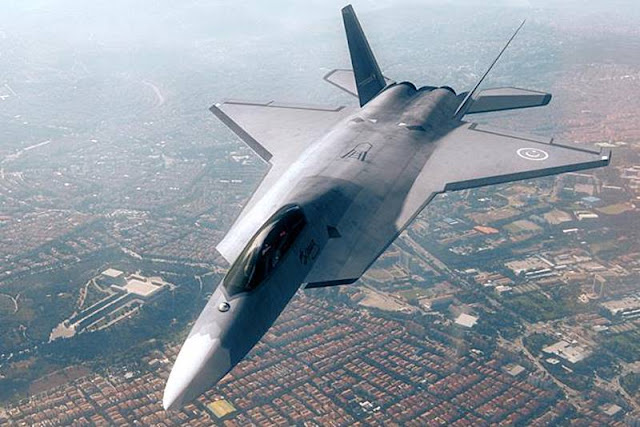UK backs Turkey’s fifth-gen TF-X stealth fighter project against Greece
 |
| Turkish Aerospace TF-X fifth-gen stealth fighter. |
The UK, having exited the European Union, is now seeking to reclaim its role in world affairs. London's main ambitions include strengthening its industrial relationship with Ankara regarding the development of the fifth generation TF-X fighter.
The Turkish project represents the main threat to Greece in the Mediterranean area. This area suffers from the strong tension between Turkey and Greece which are involved in a dispute over the maritime borders.
In an effort to increase its military strength, Athens recently closed a deal with France to procure Rafale fighters as well as purchase additional Seahawk helicopters from the United States.
Furthermore, Greece is also looking to grab those F-35 aircraft that should have been destined for Turkey before it was expelled from the F-35 program, throwing more salt on Ankara's wound.
According to the Greek media Pentapostagma, the British Ambassador to Turkey Sir Dominick Chilcott confirmed that the main partner in the development of the new Turkish fighter, BAE Systems, was satisfied with the progress of the program.
Chilcott said he hoped Rolls Royce, which supplies the engines for Britain's sixth-generation Tempest fighter, could do the same for the Turkish fighter. However, according to Chilcott, the British government has not yet defined who will design the engine for the TF-X.
He also said that the second phase of the program, which involves production of the prototype, is likely to begin in late 2021 or early 2022.
The TF-X (Turkish Fighter - Experimental) is a fifth generation stealth fighter developed by Turkish Aerospace Industries (TAI) for the Turkish Air Force as well as for the international market.
The proposed all-season twin-engine air superiority fighter was developed in collaboration with BAE Systems, with its full-scale model unveiled at the Paris Air Show 2019.
According to the Turkish Ministry of Defense, the fighter is expected to make its first flight by 2023, initially equipped with two General Electric F110 engines.
Potential partners or customers of the TF-X fighter include Bangladesh, Pakistan, Indonesia and Kazakhstan.
The Turkish project represents the main threat to Greece in the Mediterranean area. This area suffers from the strong tension between Turkey and Greece which are involved in a dispute over the maritime borders.
In an effort to increase its military strength, Athens recently closed a deal with France to procure Rafale fighters as well as purchase additional Seahawk helicopters from the United States.
Furthermore, Greece is also looking to grab those F-35 aircraft that should have been destined for Turkey before it was expelled from the F-35 program, throwing more salt on Ankara's wound.
According to the Greek media Pentapostagma, the British Ambassador to Turkey Sir Dominick Chilcott confirmed that the main partner in the development of the new Turkish fighter, BAE Systems, was satisfied with the progress of the program.
Chilcott said he hoped Rolls Royce, which supplies the engines for Britain's sixth-generation Tempest fighter, could do the same for the Turkish fighter. However, according to Chilcott, the British government has not yet defined who will design the engine for the TF-X.
He also said that the second phase of the program, which involves production of the prototype, is likely to begin in late 2021 or early 2022.
The TF-X (Turkish Fighter - Experimental) is a fifth generation stealth fighter developed by Turkish Aerospace Industries (TAI) for the Turkish Air Force as well as for the international market.
The proposed all-season twin-engine air superiority fighter was developed in collaboration with BAE Systems, with its full-scale model unveiled at the Paris Air Show 2019.
According to the Turkish Ministry of Defense, the fighter is expected to make its first flight by 2023, initially equipped with two General Electric F110 engines.
Potential partners or customers of the TF-X fighter include Bangladesh, Pakistan, Indonesia and Kazakhstan.
Written by Matteo Sanzani
Image: Turkish Aerospace





No comments
All comments related to the contents of our articles are welcome. It is not allowed to post promotional messages, links to external sites, or references to activities not related to this blog.